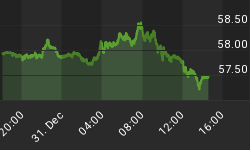It's already been a month since gold fell almost $200 in two trading days. This head-spinning drop damaged the bull market. It broke the back of a STRONG market, but that doesn't necessarily mean the mega uptrend is over.
Our first potential downside target level for gold at the $1300 to $1450 level was reached. And we could see gold decline further in the months ahead before a bottom is found.
Down, But Not Out ...
As of the mid-April low, gold is down about 19% for the year. If gold ends the year near these low levels, it'll be the first time in 12 years gold has had a down year. Assuming this happens, the 660% rise from 2001 to 2011 would be down about 28% from the peak, which isn't bad in perspective.
During the last 12 years, gold rose without inflation, with a war on terror, during the worst financial crisis in decades, through an unprecedented debt build up and during years of economic sluggishness.
This time period also saw the U.S. dollar decline amid growing doubts of its reserve currency status. And it's been a time when many countries have protected themselves from uncertainty by buying the most gold in 50 years. That's because our present economic situation is nearly unparalleled in U.S. history.
... Will Recover
This almost $200 gold fall is coming on the heels of a sluggish gold price since Sept 2011. Gold tested the $1536 level twice in the last 1½ years, but this time around took the cake.
Gold's two day fall was the worst since 1980. And as investors lost confidence in gold, April also ended with the world's largest ETF, GLD, having its biggest monthly outflow since it began.
In hindsight, it makes sense that with so many sell orders near the lows, it triggered a snowball decline.
For now, this drop has sparked a lot of controversy between the gold lover's camp and the gold haters. It's a passionate situation. And depending on your outlook, you could say both are right.
We are of the camp that the bull is wounded but it will recover. It may take time to recoup and we'll likely see more volatility before any kind of decent rise develops.
The 1974 -1976 Example
This bearishness can only be compared to 1976 when gold reached a low in-between two bull markets. It was amazing.
Gold fell 50% from its almost $200 high in December 1974 to its $102 low, and it took almost two years to do this. That was enough to call it the, "Great Gold Bust"... in spite of its 460% run up from 1970 to 1974.

Often, the length of time a decline takes tends to be more bearish than the decline itself. In 2008, for instance, gold fell almost 30% in eight months. It was fast and furious but sentiment didn't have a chance to turn too bearish. Plus, almost everything else was worse.
Today is similar to 1976 because of the time it's been taking. Investors were getting turned off by the sideways gold market for the past 1½ years before it plunged last month. And especially so because the stock market has been soaring this year.
Chart 1 shows you today's gold fall from its September 2011 record peak compared to the 1974-76 time period. We indexed the peaks to 100 so you can see true time and percentage decline comparisons.
Interesting here is, so far, gold has given up almost 30% from its peak and it's getting closer in time to the 1976 lows.
That is, gold fell 50% in 1976. If today's decline is similar, we could see gold near $1,000 by June. That would be the same type of fall in time and price as in 1976, and it's the worst case scenario.
Gold Under Pressure
For now, gold continues to feel pressure when worries surface that the Fed will cut back on its easy monetary policy, yet it's very unlikely, at least for this year.
Currently, the stronger U.S. dollar of late is the real pressure on gold.
As long as the dollar is strong, we'll continue to see gold struggle. The collapsing yen, for example, is bearish for gold because it pushes up the dollar.
Meanwhile, let's take a look at the downside and what to keep an eye on...

Chart 2A shows the stepping down levels. Now that $1536 has been clearly broken, it's become the first key resistance level.
The next support is the 2011 lows near $1320 (which also happens to be the intraday low for the latest fall). This level is important because if it's broken, we could see gold slip below $1200, near the 2010 low. And in a worst case, the 2008 peak near $1000 is the ultimate support.
Our indicators show that this $1000 level would be an extreme case and if tested, it's unlikely it would stay there for long.
Notice that our favorite indicator has fallen to an extreme low area (see Chart 2B). Most interesting is that it only went below -1 in two other extremes, in 2006 and in 2008, and in both cases it preceded strong upmoves in gold.
On the upside, if gold rises above $1450 it could bounce up to $1536.
















